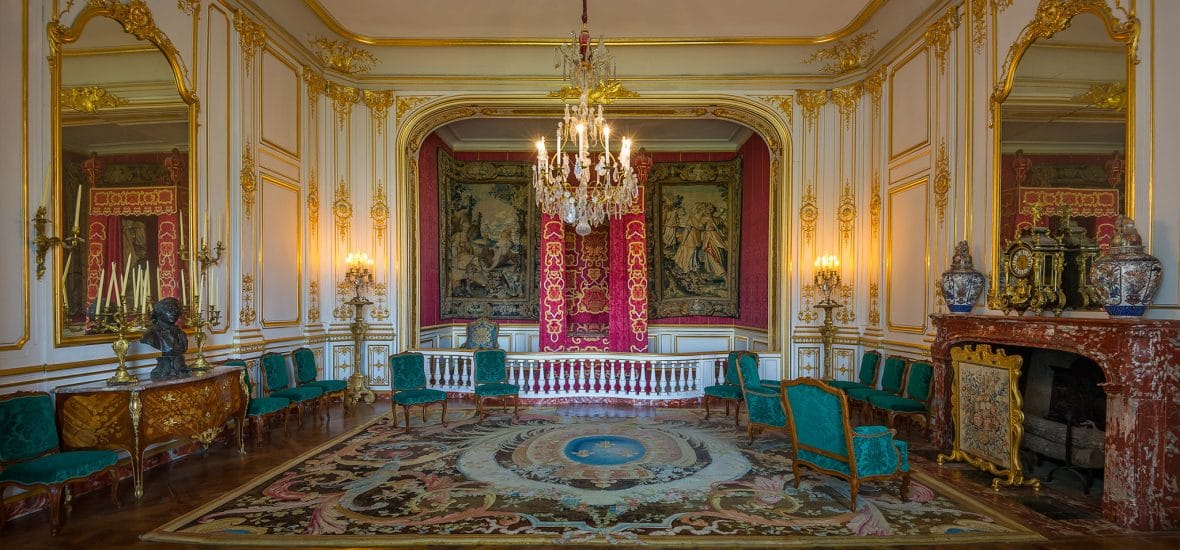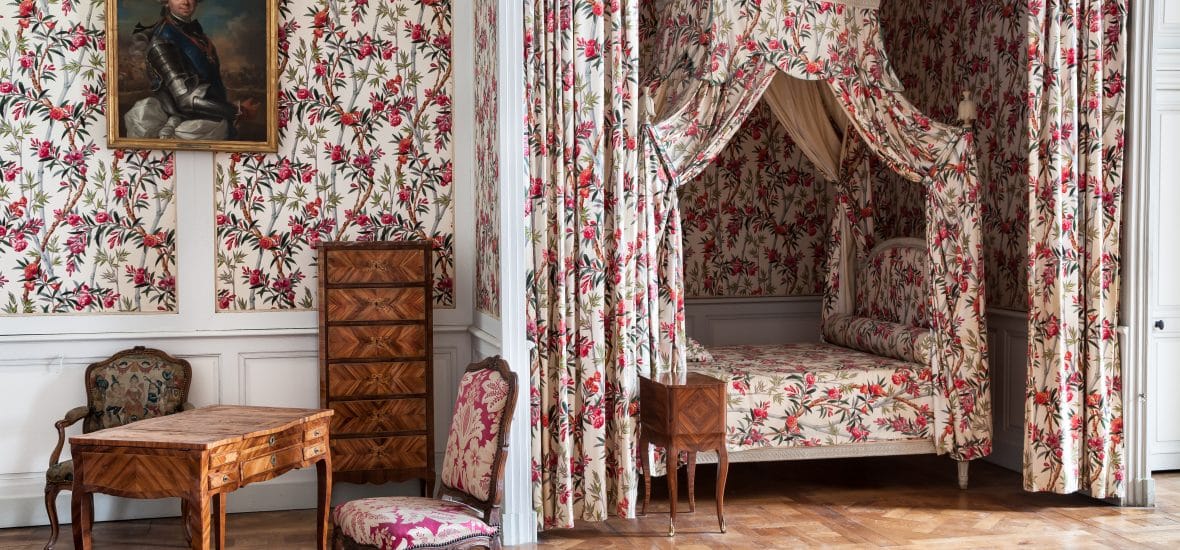As a place where kings did little more than sojourn, the château has never been furnished for once and for all. Interior decoration kept pace with the comings and goings of the sovereigns and their guests…
From the very outset, the château was not meant to be permanently inhabited. An itinerant court changed residences from one season to the next, and royal accommodations were necessarily temporary and at times ephemeral. Quite logically, the château remained largely unfurnished. The question put forward in modern-day Chambord was the following: Which epoch should be showcased, the Renaissance or the 17th and 18th centuries? It would be illusory to wish to refurbish Chambord the way it may have been in the day and age of King François. No set of royal furniture dating back to the Renaissance has come down to us, even in institutions dedicated that period (the Musée national de la Renaissance in Ecouen). As regards the 16th century, the visitor’s attention is inevitably drawn to the architecture of the château, which is in its own unique way a work of art.



The historic refurbishment project is premised on a scientific method. In order to develop coherent restoration, it is necessary to become familiar with bygone inventories, to decipher and understand their contents, and then to determine how the indoor spaces were once occupied. Though the furniture in Chambord during the 17th and 18th centuries came from the royal depository, it was devoid of a single defining characteristic. As a result, there is no need to undertake a large-scale investigation so as to try to reunite objects having been scattered to the four winds as they were sold. Nor does there exist any illusion that might make a visitor imagine that the piece of furniture he is admiring has graced the château for centuries on end, the exception confirming the rule being the table in the official apartment.
A history-based synthesis of the apartments will allow the visitor to take a trip in time through the spaces inhabited by the hosts of the château, from François I through Maurice de Saxe and the Count of Chambord.
A château is by no means self-sufficient; quite on the contrary, it maintains close ties with other castles and museums. In order to present top-quality sets of furniture and decorative ensembles, deposits are requested from the Musée du château de Versailles, the Musée des Arts décoratifs of Paris, the Château royal of Blois and the French Mobilier national. An acquisitions and purchases committee composed of art history specialists is consulted prior to each acquisition by the conservation service of the château.
One of the most beautiful tapestry collections in France has been conserved in Chambord. From the 1970s onwards, the French state has been buying larges-scale sets of 17th-century tapestries and presenting them in several French castles, among which Chambord is one of the most prominent. A centuries-old tradition of tapestry hanging is thereby renewed, and Chambord is one of the only monuments whose dimensions allow easy and agreeable viewing of these grandiose canvases. Regular rotational hanging contributes to preservation of masterpieces while facilitating their discovery by a public eager to view original.